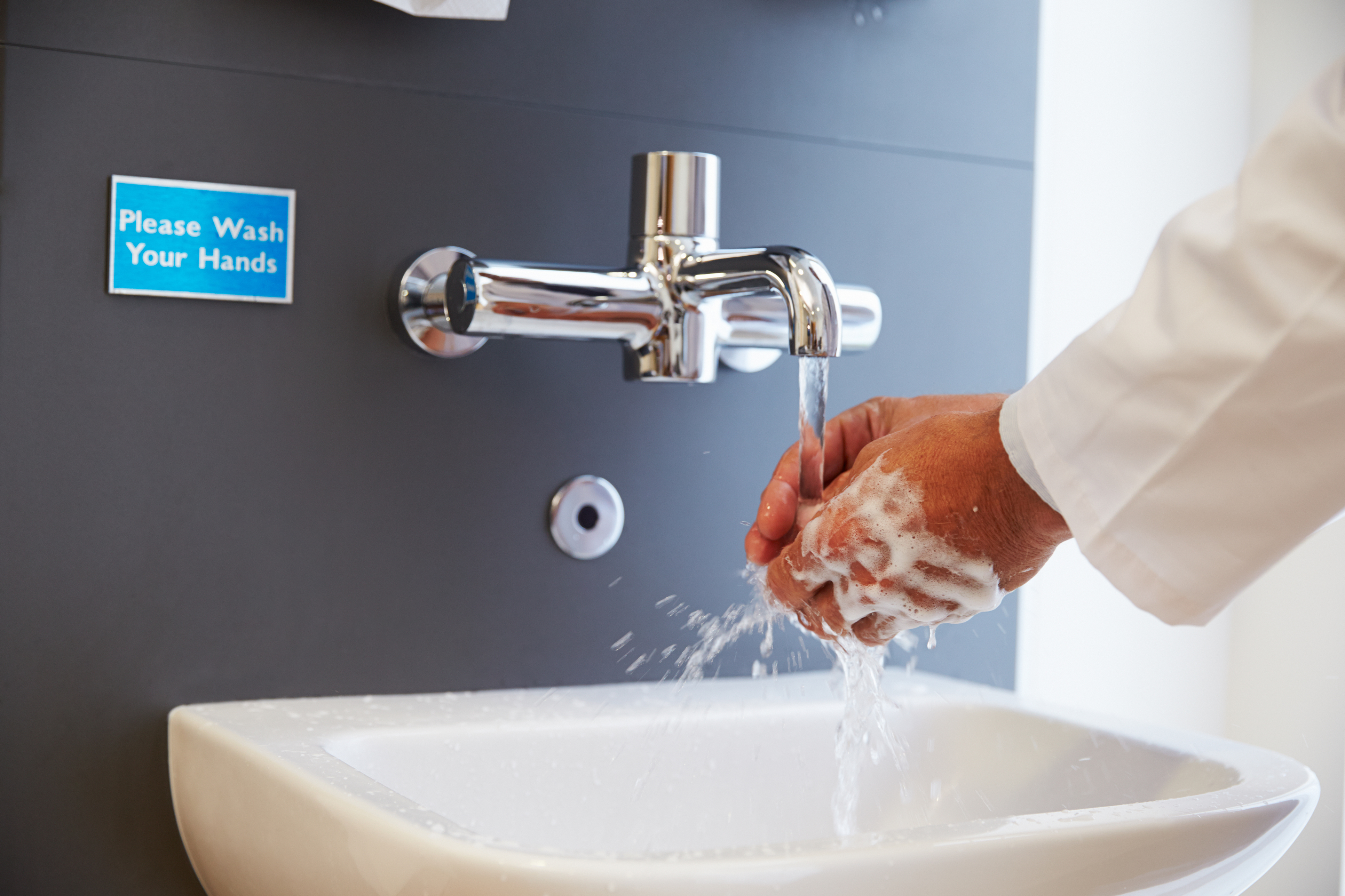Dousing Dirty Digits: Improving Hand Hygiene in Dental Practices
Laura M. Cascella, MA
Practicing diligent hand hygiene is a well-known principle of patient and healthcare worker safety, as well as a standard precaution for infection prevention and control in healthcare organizations of all types and sizes, including dental practices. In fact, hand hygiene often is recognized as the single most important step that dental providers and staff can take to prevent the spread of infections.1
Yet, as simple as practicing hand hygiene sounds, lack of compliance to established protocols can be a vexing issue for dental practices. Barriers to proper hand hygiene can vary by practice setting, but may include a busy environment; skin irritation and dryness from cleansing agents; a false sense of protection in relation to wearing gloves; lack of appropriate hand hygiene supplies; lack of, or poorly located, sinks; low prioritization due to patient demands or the belief that infection risk is low; insufficient organizational protocols or lack of awareness of protocols; inadequate knowledge about disease transmission and the importance of hand hygiene; and general forgetfulness.2
Because hand hygiene is such a vital aspect of infection prevention and control, dental practice leaders and administrators should proactively work with providers and staff to review their current policies and develop strategies to improve compliance. Examples of proactive strategies to reduce hand hygiene risks include the following:3
- Review your practice’s infection prevention and control plan to verify that hand hygiene protocols are included and thorough. Ensure that your practice’s policy also includes disciplinary actions for knowingly failing to follow established protocols.
- Make hand hygiene an organizational priority that is promoted and supported by practice leaders, administrators, and other influential staff members. Consider programs that offer incentives, rewards, and recognition for compliance with hand hygiene protocols.
- Motivate staff to follow hand hygiene protocols through education that focuses on the benefits of compliance (e.g., reducing adverse events, protecting patients, and setting an ethical example) and the risks associated with noncompliance (e.g., health implications for patients and staff, disciplinary actions, and potential liability).
- Consider various methods for engaging providers and staff in hand hygiene education. For example, provide actual examples of infection control lapses that have resulted in adverse outcomes, and offer hands-on tutorials for practicing appropriate hand hygiene and gloving techniques.
- Support a culture of safety that empowers providers, staff, and patients to speak up about hand hygiene. Post signs in visible locations that explain the practice’s commitment to hand hygiene and encourage patients to voice potential concerns and ask questions.
- Use visual cues to trigger providers, staff, and patients to clean their hands. For example, place automated hand sanitizer dispensers in strategic locations throughout the practice (e.g., at reception, in waiting areas, and in patient care areas).
- Implement environmental modifications to support hand hygiene compliance. For example, locate glove dispensers next to sinks and hand sanitizer stations, and make sure providers and staff have ample counter space on which to place equipment and supplies while performing hand hygiene.
- Stock adequate hand hygiene supplies, including plain soap, antimicrobial soap, alcohol-based hand sanitizer, and paper towels. Consider providing lotion to combat dry and irritated skin, which is a common barrier to hand hygiene compliance. Make sure supplies are in a convenient, easily accessible location.
- Monitor staff for hand hygiene compliance, and provide constructive feedback and guidance to address observed lapses. Make sure expectations and disciplinary actions are consistently applied across the organization.
Hand hygiene is a pillar of infection prevention and control efforts in dentistry. Although gaps and oversights in hand hygiene compliance may seem innocuous, they can have serious consequences for patients, providers, and staff. To mitigate risks associated with poor compliance to hand hygiene protocols, dental practices should assess their current policies, work with providers and staff to identify barriers to compliance, and implement strategies to address potential issues and shortcomings. To learn more about infection prevention and control in dentistry, check out these resources.
1 Centers for Disease Control and Prevention. (2016, October). Summary of infection prevention practices in dental settings: Basic expectations for safe care. Atlanta, GA: Centers for Disease Control and Prevention, U.S. Department of Health and Human Services. Retrieved from www.cdc.gov/oralhealth/infectioncontrol/pdf/safe-care2.pdf
2 World Health Organization. (2009). Hand hygiene practices among health-care workers and adherence to recommendations. In WHO guidelines on hand hygiene in health care: First global patient safety challenge clean care is safer care (Chapter 16). Retrieved from www.ncbi.nlm.nih.gov/books/NBK144026/; Chassin, M. R., Mayer, C., & Nether, K. (2015, January). Improving hand hygiene at eight hospitals in the United States by targeting specific causes of noncompliance. The Joint Commission Journal on Quality and Patient Safety, 41(1), 4-12; Centers for Disease Control and Prevention.(2002, October 25). Guideline for hand hygiene in health-care settings: Recommendations of the Healthcare Infection Control Practices Advisory Committee and the HICPAC/SHEA/APIC/IDSA Hand Hygiene Task Force. Morbidity and Mortality Weekly Report, 51(No. RR16). Retrieved from www.cdc.gov/mmwr/PDF/rr/rr5116.pdf
3 Centers for Disease Control and Prevention, Summary of infection prevention practices in dental settings: Basic expectations for safe care; Chassin, et al., Improving hand hygiene at eight hospitals in the United States by targeting specific causes of noncompliance; Zimmerman, B. (2016, December 7). A culture of support: 4 ways to improve hand hygiene compliance. Becker’s Clinical Leadership & Infection Control. Retrieved from www.beckershospitalreview.com/quality/a-culture-of-support-4-ways-to-improve-hand-hygiene-compliance.html



